Kraus-Anderson and the Milwaukee Road
When the J. L. Robinson Company changed its name to Kraus-Anderson in the year 1930, the new owners, wanting to salvage some of the recognition they were giving up with the name change, employed the old “J.L. Robinson Company” on their letterhead, adding: “established in 1897.”

KA’s history archive doesn’t currently have a record of this 1897 origin story, but there is a legend at Kraus-Anderson that Robinson’s original job, the 1897 job, had something to do with the Milwaukee Depot, and, indeed, the depot (still gracing us with its presence on the corner of Washington and 3rd) was under construction that year.
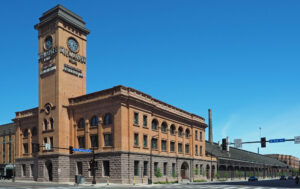
If this is an origin story for Kraus-Anderson, it is surprising that we find only two additional railroad projects in the KA archive, but it is interesting that both of them also involve the Milwaukee Road.
The Milwaukee Road
Born from the Minneapolis and Cedar Valley Railroad, which the Minnesota Territorial Legislature commissioned in 1856, the Chicago, Milwaukee, St. Paul and Pacific Railroad Company, often, mercifully, shortened to Milwaukee Road, was the earliest rail link between Minneapolis and the wider world.
Following Minnesota’s oldest military road, connecting Fort Snelling to St. Anthony Falls, the Milwaukee Road cut a diagonal line that still defines the geography of South Minneapolis.

The 1940s
After nearly half a century’s absence, Kraus-Anderson returned to the Milwaukee Road depot for “alterations to freight house” as the permit says. It is unclear exactly what work KA did, and most of downtown Minneapolis’s once sprawling freight yards are gone.
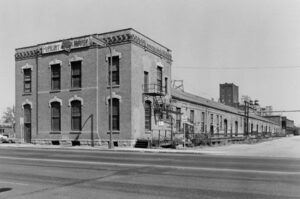
The last remnant is the “head house” or freight office building that once stood at the end of Milwaukee Road’s freight depot. The building now houses a two-story Dunn Bros coffee shop. The National Register of Historic Places describes the building succinctly: “Fronting on Third Avenue is the two story rectangular yellow brick office with flat roof with double-hung sash windows with heavy white hoods.”
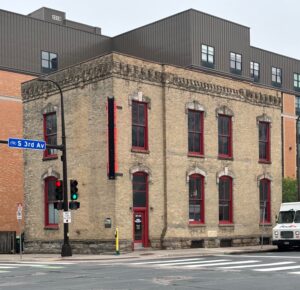
St. Paul
The Milwaukee Road was also a big deal for historic St. Paul.
The economic focus of nineteenth century St. Paul was transportation. Before railroads took over, transportation meant river boats. In St Paul the Milwaukee Road’s freight house had pride of place, directly on the riverbank, right by the boat landing.
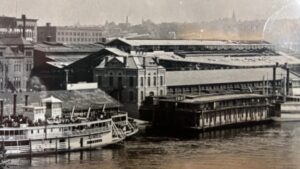
In 1944 Kraus-Anderson did work for the Milwaukee Road in St. Paul that, based on the building permit, was very similar to what it did in Minneapolis a few years earlier. “Alteration to freight house” described the project in both cases. The St. Paul job was, however, the more expensive project, with an estimated cost of $10,000. For perspective, Kraus-Anderson built an office and warehouse for its new headquarters that same year, with an estimated cost of $4,000. Given the cost of the project and considering some available photographic evidence, it appears that this, Kraus-Andreson’s first St. Paul job, was quite historic.
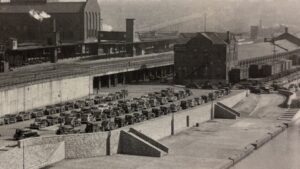
It appears KA tore down the old freight house and replaced it with a new one. The Milwaukee Road didn’t survive the 20th century, being absorbed by the Soo Line, which was in turn absorbed by Canadian National. The Milwaukee Road freight depot, along with the railroad tracks that once hugged the river southeast of downtown, were torn up in the 1970s and replaced with a freeway.
CATEGORY: Uncategorized